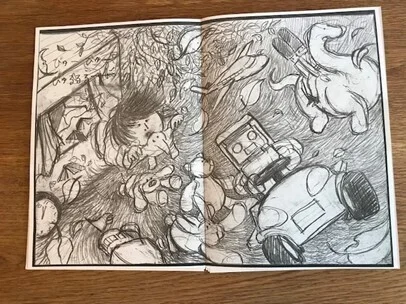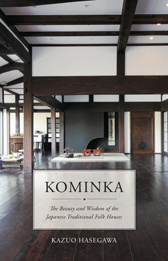The journey to the Creation of the Picture Book, A Wild Windy Night
—The interviewer, Hasegawa, Editor for the original Japanese book (November 2021)

Hasegawa: Thank you for your time today. In this interview, we’ll be exploring the creation process of A Wild Windy Night. Can you recall when the initial planning meeting took place? I believe it was just before the the pandemic, around 2019.
Abe: Has it been that long already?

Hasegawa: Your picture book debut was with Aitai na (I Want to See You) last year, 2020. Since then, you’ve been consistently releasing picture books at a fast pace. Will picture books continue to be the primary focus from now on?
Abe: Yes, I would be delighted to continue publishing picture books!
Hasegawa: Perfect! (laughs). Today, I’d like to delve into the time before you began creating picture books.
Abe: Since I was little, I loved creating imaginary worlds, drawing pictures, and adding stories to them. When I was in elementary school, we got a big desktop computer at home, and I have memories of creating stories with it. I’ve always loved drawing as a hobby. However, during middle school, my focus shifted to sports club activities . . .
Hasegawa: Oh, I hadn’t heard about that. What club was it?
Abe: A basketball club.
Hasegawa: Oh . . . that’s surprising. Well, let’s return to our conversation about drawing.
Abe: Yes, I’ve always been drawing as a hobby. After graduating high school, I enrolled in the Tohoku University of Art and Design. I applied for both painting and sculpture, but I didn’t get accepted for painting and ended up in the sculpture department. During that time, I was lost and I didn’t know what I wanted to do.
I took a leave of absence from the university, worked part-time at a night club in Sendai city, and started drawing flyers for the events at the venue. Artists who saw those flyers started asking me to design CD covers, and as those opportunities increased, I began to think that I wanted to work as an illustrator.
So, I tried to sell my art works by exhibiting in various places to make a living. However, I felt there were limited opportunities in the city of Sendai, and when I was around 27, I decided to challenge myself and move to Tokyo. To learn how to turn art into a profession, I started studying at Palette Club School on weekends. During weekdays, after my job at the time, I would visit design offices, publishers and others with my portfolio.
Gradually, I began getting illustration works, but the desire to publish picture books was always there. I joined Atosaki Juku, a workshop for picture book authors, and began creating rough drafts for picture books. Luckily, the opportunity for publication of Aitai na arrived from the picture book publisher.
Hasegawa: And now, here we are.
Abe: That’s right! (laughs)
Hasegawa: Now, let’s talk about A Wild Windy Night. It’s been about two years since I first saw the rough drafts. How did you come up with the story?
Abe: When I was a child, windy nights were a bit scary and thrilling, and to overcome that fear, I used to imagine various happy stories. From my experiences I wanted to create a story that by imagining another world within yourself and diving into it, you would overcome your fears and anxieties in daily life and have a rich experience through the world of your imagination.
Hasegawa: The initial draft was indeed a bit scary. The wild wind seemed like a strong force of nature like hurricanes that evoked thoughts of disasters, blowing away enjoyable things. That was the first impression I conveyed. We went through about 4 or 5 drafts to reach the final rough draft.

Hasegawa: That sense of fear was also one of the charms, and I believe it still remains. The joy of flying reminded me of The Snowman and The Big, Big Turnip. So, I wanted to extract that joy. Were there any challenges in the rough draft process?
Abe: I wanted to express spiritual growth of the main character in the book. To portray that, I questioned until the last moment whether this narrative was truly fitting for it.
Hasegawa: Exactly, even working on the final illustrations, you continued changing the text. After increasing to 40 pages, the editorial requests had come to an end. From there, I left it to you.


Abe: Thank you for trusting me. Also, in the early stages, you gave me feedback about the toys, right?
Hasegawa: Yes, they were not characters, and I felt they were unrealistic. By adding more description of the toys, the house seemed more occupied.
Abe: I had never really taken a close look at toys before. So I visited toy stores, explored what kinds of toys were available, and bought unique toys for references. In the double-page spread where everyone is flying towards the sky, you suggested, ‘Wouldn’t it be nice if the toys looked even more wild?’ (laughs) You encouraged me to let loose a bit.


Hasegawa: What was it like when you were drawing the illustrations? I imagine it could be simply challenging at times.
Abe: It was challenging, but I was determined to create illustrations that would challenge my comfort zone, so I put in a lot of effort.
Hasegawa: What was your comfort zone?
Abe: I wanted to produce something I’ve never created before, something beyond my own imagination.



Hasegawa: In terms of density and complexity of illustrations, this book has not only a page count of 40 pages but also many frames including a single spread where the protagonist appears three times. At a glance, it seemed very overwhelming and challenging.
Abe: I aimed to create a world in which readers could immerse themselves, so I meticulously crafted the illustrations down to the smallest details. Yes, it was challenging, but I’m glad I took on the challenge without compromising.
Hasegawa: Well . . . I’ve asked many questions today, is this enough?
Abe: Yes, I think so! (laughs).
Hasegawa: Of course, we couldn’t fully convey the charm of the picture book here. Everyone, please pick up and read A Wild Windy Night!


 MUSEYON BOOKS Smart City Guides for Travel, History, Art and Film Lovers
MUSEYON BOOKS Smart City Guides for Travel, History, Art and Film Lovers


